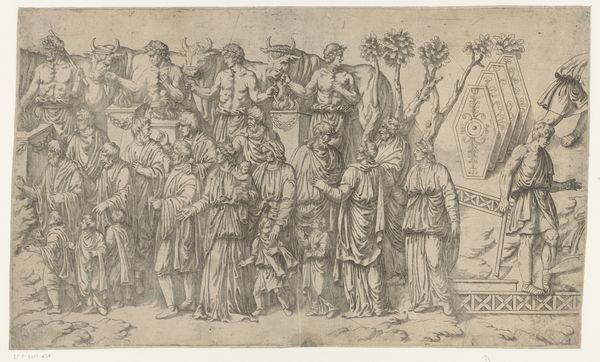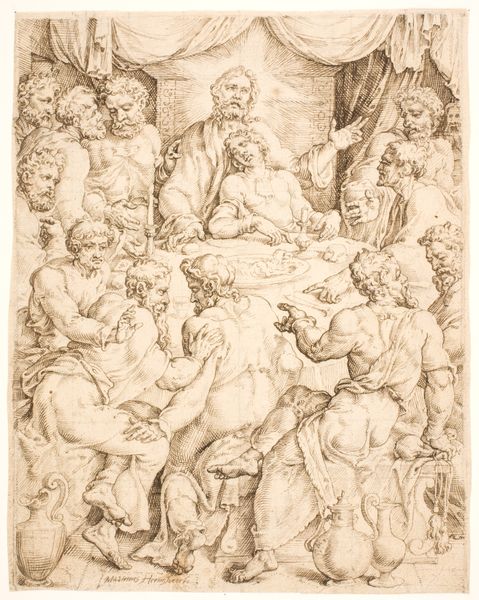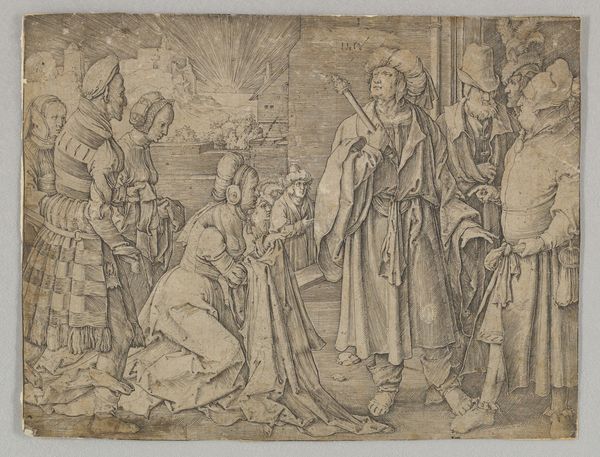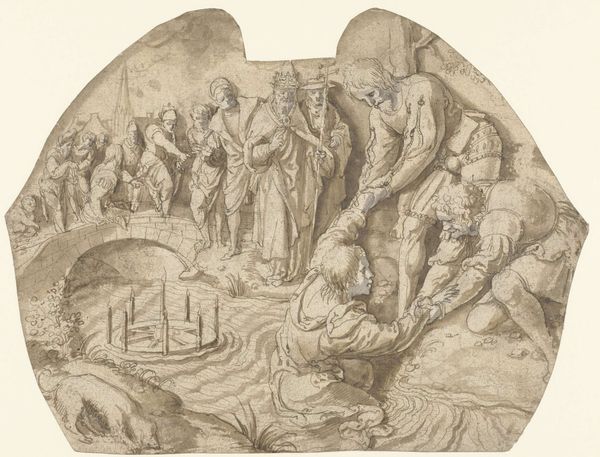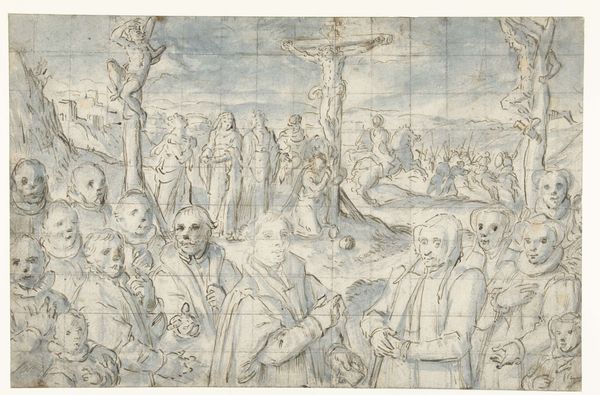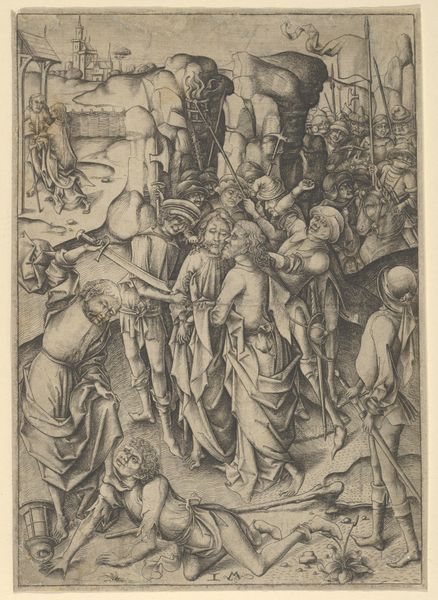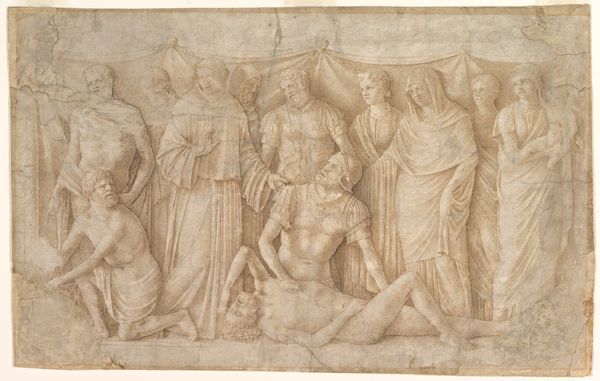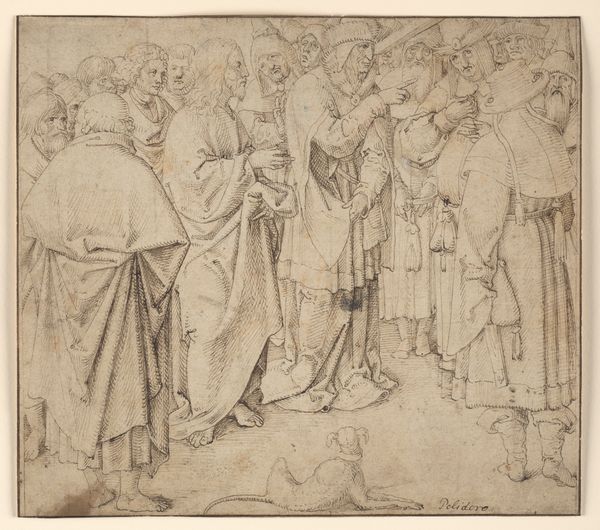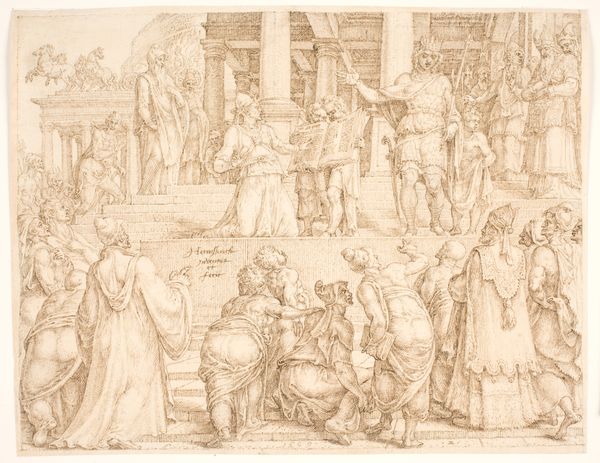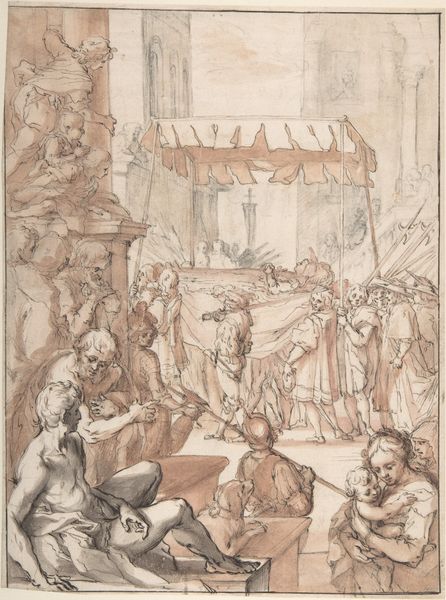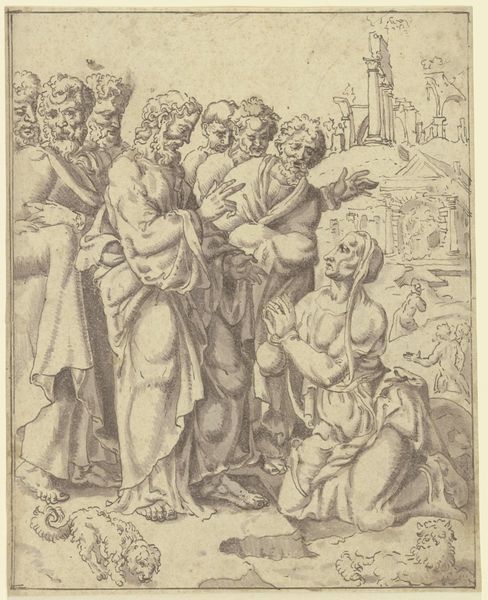
drawing, print, charcoal
#
drawing
# print
#
classical-realism
#
charcoal drawing
#
ancient-mediterranean
#
charcoal
#
history-painting
#
academic-art
Dimensions: sheet: 4 7/16 x 9 1/2 in. (11.2 x 24.2 cm)
Copyright: Public Domain
Editor: This is an 18th-century drawing called "Design for a Roman Procession" by an anonymous artist, now at the Met. It looks like a frieze depicting a formal procession. The mood seems… staged, maybe a bit theatrical. What do you see in this piece? Curator: I see echoes of cultural memory, a visual script of power and spectacle. Note the prominent display of objects being carried – ceremonial vessels, emblems, perhaps even spoils of war. What do these repeated forms and carefully choreographed figures evoke for you in terms of cultural performance? Editor: I guess it speaks to a very structured society with an established set of rituals and symbols... a specific visual language understood by everyone. Curator: Precisely. Look closely at how certain figures are posed – the bearer of what seems like a reliquary, the musician with the drum… how do these individual elements contribute to the overall sense of order and hierarchy within the procession? And, consider what these symbolic objects and arrangements communicated about Rome’s values and priorities. What stories were they trying to tell? Editor: It seems like they are trying to show a unified front, an image of strength and piety. Were these processions a common thing? Curator: They were carefully orchestrated events used to solidify the emperor’s, or other prominent officials', authority. What about the act of documentation itself – that someone felt the need to capture this event, this ritual? What does it signify? Editor: Maybe they wanted to immortalize the moment or to use it as a blueprint for future events? Curator: Perhaps a blueprint or, better yet, a constant reminder. Each carefully placed figure and object serves as a building block in this cultural narrative. Seeing it this way helps me appreciate the symbolic power embedded within seemingly simple imagery. Editor: I never thought about how deliberate these kinds of processions would be, almost like performance art on a grand, political scale. Curator: And that very performative quality, re-enacted across generations, reinforces its message and influence. These designs show how the language of symbols helps construct power, communicating values through ritual.
Comments
No comments
Be the first to comment and join the conversation on the ultimate creative platform.
